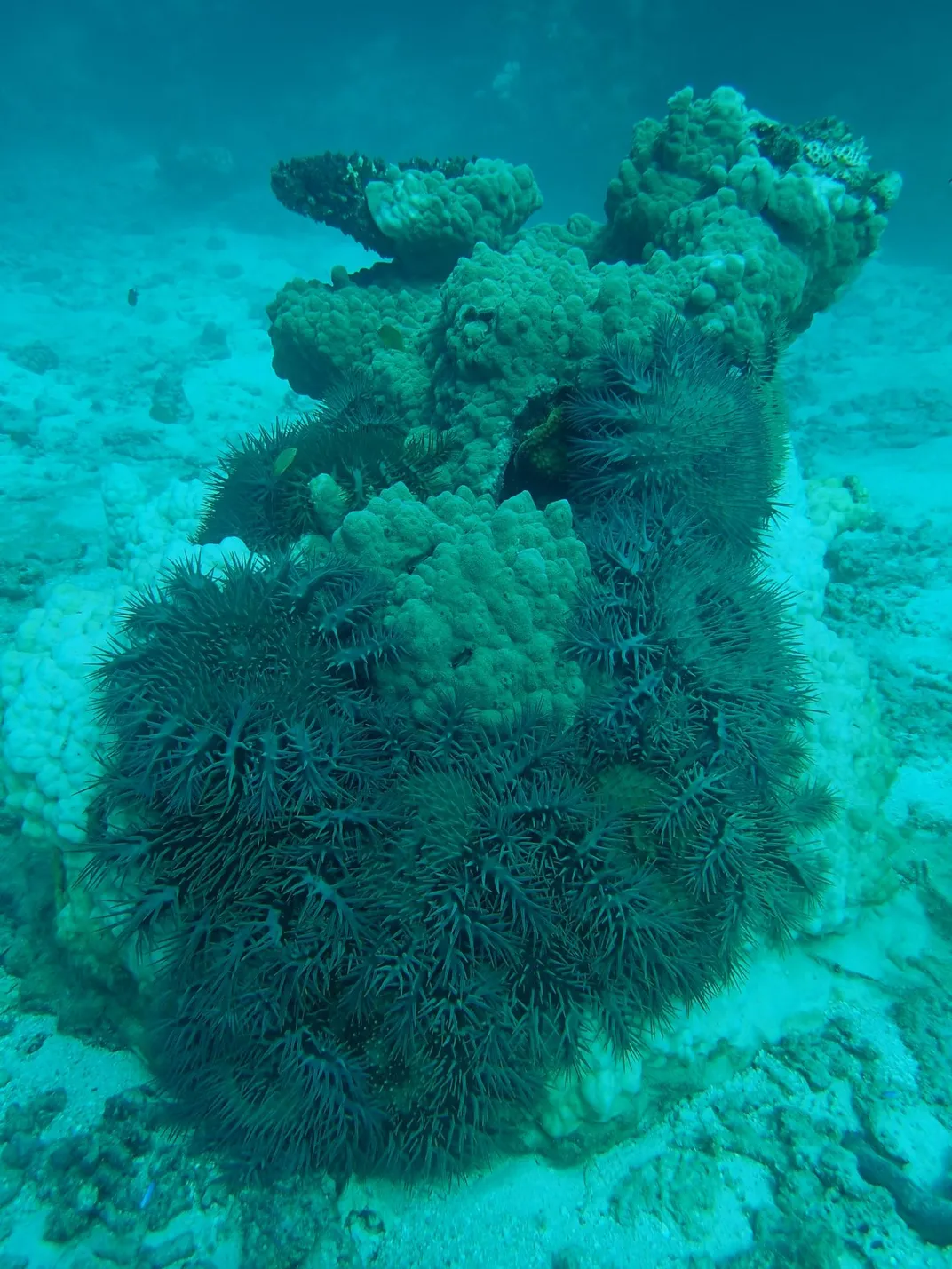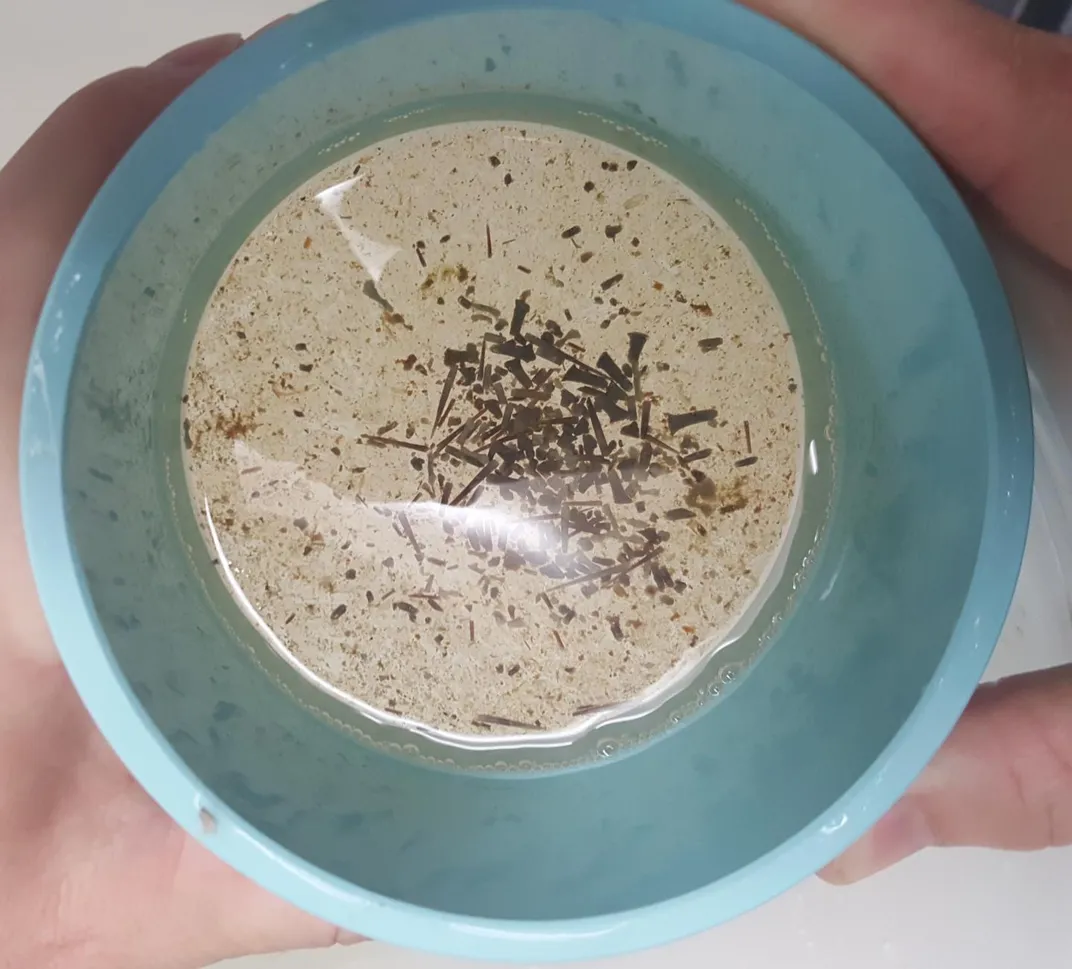What Eats the Crown-of-Thorns Starfish? The Evidence Is in the Poop
The sea creatures are the second-biggest threat to the Great Barrier Reef after tropical cyclones
/https://tf-cmsv2-smithsonianmag-media.s3.amazonaws.com/filer/44/24/44245dd3-8726-47f3-8afe-ee60d920f19e/2020_june10_crownofthorns.jpg)
Crown-of-thorns starfish are coral-eating creatures that can have more than a dozen legs and grow to 30 inches across. When their numbers get out of control, coral reefs suffer massive losses; in one year, a single starfish can eat 20 to 32 feet of coral. Compounding on that damage, the crown-of-thorns starfish is the world’s most fertile invertebrate, with large females laying more than 200 million eggs in a season.
But scientists have noticed that while some reefs face periodic plagues of the crown-of-thorns starfish, in other areas, the coral killer’s population is naturally kept in-check. Starfish predators seemed likely. A team of researchers led by Australian Institute of Marine Science biologist Frederieke Kroon set out to identify which fish have thorny stars on the menu, Jake Beuhler writes for Science News.
Rather than try to catch mealtime in action, the team targeted food’s inevitable result: poop. The team identified 30 fish from 18 species that had chowed down on a crown-of-thorns starfish in recent days, according to their paper published on May 18 in the journal Scientific Reports.
“Just the fact that we found DNA of crown-of-thorns in fish poo to begin with was surprising to me!” Kroon tells Science News. “I thought we were looking for a needle in a haystack.”
The only well-known predator of adult crown-of-thorns starfish was the Pacific triton, a giant sea snail that hunts by injecting venom. Dozens of coral fish had been identified as predators of the starfishes’ sperm, very young starfish, or were observed dining on dead or almost-dead adults, according to the paper. But it’s the living adults that inflict the damage—per Allison Hirschlag of the Washington Post, 30 crown-of-thorns starfish on two-and-a-half acres can kill the coral on an entire reef.
The new study sheds light on new possibilities in crown-of-thorns starfish management. So far, experts have tried to cull wild populations by injecting them with vinegar or bile salts, or by removing and destroying the starfish one at a time. In 2015, crews killed 350,000 starfish, but somewhere between 4 to 12 million in total live in the Great Barrier Reef, per the Washington Post. In 2018, the researchers deployed starfish-killing robots to manage the Great Barrier Reef’s starfish population.
To investigate whether wild fish are naturally managing the starfish population, Kroon’s team gathered hundreds of fish in nets over the course of 2018 and 2019, rinsed them off to remove any DNA floating in the ocean water, and kept them in tanks overnight. Then, the team gathered the fish poop left behind in the tank and used a new genetic analysis technology to scan for DNA evidence of the crown-of-thorns starfish. Some of the poo samples even contained crushed up starfish spines. The team also dissected fish killed by spearfishing, per Science News.
The researchers identified 18 species of fish with starfish DNA in their guts or poop, including nine that hadn’t been linked to crown-of-thorns starfish predation before. But marine ecologist Kristen Dahl of the University of Florida in Gainesville, who wasn’t involved in the recent study, tells Science News that she expected the team to find more species. But it’s possible that younger starfish DNA falls apart more quickly after being eaten, so the technique that Kroon’s team used couldn’t sense it.
Many of the fish species found by Kroon’s team are targeted by human fishing.
"Our findings might also solve a mystery—why reef areas that are closed to commercial and recreational fishing tend to have fewer starfish than areas where fishing is allowed," Kroon says in a statement. When human activity removes the starfish’s natural predators, their population can boom.

